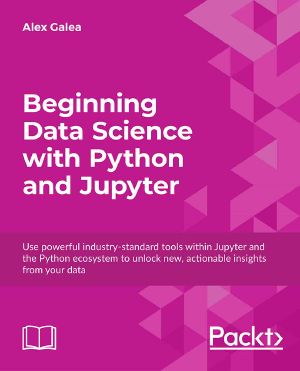Beginning Data Science with Python and Jupyter

- Authors
- Galea, Alex
- Publisher
- Packt Publishing
- Tags
- programming
- ISBN
- 9781789532029
- Date
- 2018-06-05T00:00:00+00:00
- Size
- 12.99 MB
- Lang
- en
Use powerful industry-standard tools to unlock new, actionable insight from your existing data
Key Features Get up and running with the Jupyter ecosystem and some example datasets Learn about key machine learning concepts like SVM, KNN classifiers and Random Forests Discover how you can use web scraping to gather and parse your own bespoke datasets Book Description
Getting started with data science doesn’t have to be an uphill battle. This step-by-step guide is ideal for beginners who know a little Python and are looking for a quick, fast-paced introduction.
Get to grips with the skills you need for entry-level data science in this hands-on Python and Jupyter course. You’ll learn about some of the most commonly used libraries that are part of the Anaconda distribution, and then explore machine learning models with real datasets to give you the skills and exposure you need for the real world.
We'll start with understanding the basics of Jupyter and its standard features. You'll be analyzing an example of a data analytics report. After analyzing a data analytics report, next step is to implement multiple classification algorithms. We’ll then show you how easy it can be to scrape and gather your own data from the open web, so that you can apply your new skills in an actionable context. Finish up by learning to visualize these data interactively.
What you will learn Identify potential areas of investigation and perform exploratory data analysis Plan a machine learning classification strategy and train classification models Use validation curves and dimensionality reduction to tune and enhance your models Scrape tabular data from web pages and transform it into Pandas DataFrames Create interactive, web-friendly visualizations to clearly communicate your findings Who this book is for
This course is ideal for professionals with a variety of job descriptions across large range of industries, given the rising popularity and accessibility of data science. You'll need some prior experience with Python, with any prior work with libraries like Pandas, Matplotlib and Pandas providing you a useful head start.